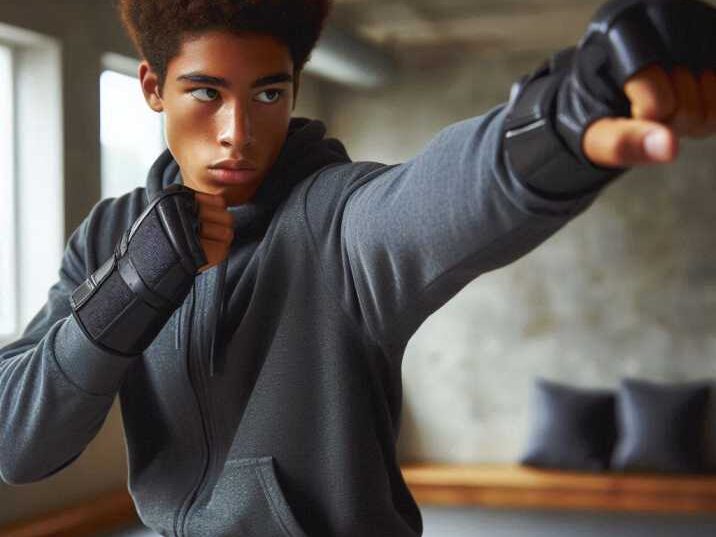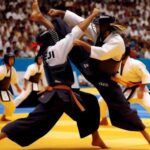Introduction
Table of Contents
Krav Maga is a self-defense system that combines techniques from various martial arts, such as boxing, judo, and wrestling. Originally developed for the Israeli military, it’s designed to be practical and effective for real-life situations. But did you know you can start learning Krav Maga at home? With dedication, discipline, and the right approach, you can build a solid foundation in this martial art from the comfort of your home. Training in Krav Maga not only teaches self-defense but also requires concentration and discipline, which can translate to improved focus in school and other activities. This guide will show you how to get started, what you need, and how to make the most out of your home training sessions.

Why Learn Krav Maga at Home?
1. Convenience and Flexibility
Learning Krav Maga at home offers flexibility. You can practice whenever you want without the constraints of a gym schedule. This makes it easier to fit training around school, homework, and other activities.
2. Personalized Learning Pace
Everyone learns at their own pace. At home, you can focus on the areas you find most challenging without feeling pressured to keep up with a class. You can spend extra time on techniques that require more practice, ensuring a thorough understanding.
3. Cost-Effective
Training at home eliminates the need for expensive gym memberships or private lessons. With minimal equipment and some space, you can effectively train and improve your Krav Maga skills.
Getting Started: What You Need
To start learning Krav Maga at home, you will need a few basic items:
- Comfortable Workout Clothes: Wear clothes that allow free movement.
- Training Mat: A mat can provide a safer surface for practicing rolls and falls.
- Mirror: A full-length mirror can help you check your form and posture.
- Water Bottle: Staying hydrated is essential during intense training sessions.
- Online Resources or DVDs: Look for instructional videos from certified Krav Maga instructors to guide your training.
Basic Techniques to Learn Krav Maga at Home
1. Stance and Movement
Your stance is the foundation of all Krav Maga techniques. Start by practicing the basic fighting stance:
- Stand with feet shoulder-width apart.
- Keep one foot slightly in front of the other.
- Bend your knees slightly and keep your weight on the balls of your feet.
- Hands should be up to protect your face, with elbows close to your body.
Movement is crucial in Krav Maga. Practice moving forward, backward, and sideways while maintaining your stance. Remember to always keep your feet apart and move smoothly.
2. Striking Techniques
Krav Maga uses powerful strikes to neutralize a threat quickly. Start with these basic strikes:
- Straight Punch (Jab and Cross): Aim to hit with the first two knuckles, keeping your wrist straight. Practice punching with both hands, focusing on speed and accuracy.
- Elbow Strikes: These are effective for close-range attacks. Swing your elbow horizontally or vertically to strike the target. Practice both high and low elbow strikes.
- Front Kick (Straight Kick): Aim to kick with the ball of your foot, targeting the attacker’s groin or knee. Start slowly to ensure proper form, then increase speed and power.
3. Defending Against Common Attacks
Krav Maga focuses on defending against real-life attacks. Here are some basic defenses to practice:
- Defense Against a Choke: Practice breaking free from a front choke by raising your arms, turning your body, and striking the attacker’s groin.
- Defense Against a Wrist Grab: Practice the wrist release by twisting your hand in the direction of the attacker’s thumb while stepping back.
Advanced Techniques to Practice
Once you have mastered the basics, move on to more advanced techniques:
1. Ground Defense
Learning how to defend yourself on the ground is crucial in Krav Maga. Practice:
- Ground Kicks: Use your legs to kick at an attacker while maintaining a defensive position on your back.
- Getting Up Safely: Learn how to get back on your feet without exposing yourself to danger.
2. Defending Against Weapons
While it is crucial to train with a qualified instructor when learning weapon defenses, you can start by familiarizing yourself with the basic concepts:
- Knife Defense: Practice the movements for disarming a knife-wielding attacker, focusing on redirecting the attack and counter-attacking.
- Stick Defense: Practice defending against a stick by blocking and closing the distance to neutralize the attacker.
Training Drills for Home Practice
To effectively learn Krav Maga at home, include the following drills in your training routine:
1. Shadow Fighting
Shadow fighting is a great way to practice strikes, kicks, and movements without a partner. Imagine an opponent in front of you and practice combinations of punches, kicks, and defensive moves.
2. Reaction Drills
Reaction drills help improve your reflexes. Practice defending against an imaginary attack, reacting quickly to an incoming strike or grab. You can use a timer or a random signal to make it more challenging.
3. Strength and Conditioning
Krav Maga requires strength and endurance. Incorporate strength training exercises such as push-ups, squats, and sit-ups into your routine. Add cardiovascular exercises like jumping jacks, running in place, or skipping rope to improve stamina.
Tips for Effective Home Training
- Set Clear Goals: Define what you want to achieve with each session.
- Practice Regularly: Consistency is key. Set aside specific times each week for training.
- Stay Focused: Eliminate distractions to maintain concentration during training.
- Record Yourself: Use a phone or camera to record your practice sessions. Review the footage to identify areas for improvement.
- Seek Feedback: If possible, get feedback from a certified instructor through online platforms.

Table of Information: Key Techniques and Drills
| Technique/Drill | Purpose | How to Practice |
|---|---|---|
| Basic Fighting Stance | Foundation for all techniques | Stand with feet apart, one foot slightly forward |
| Straight Punch (Jab/Cross) | Striking to neutralize an opponent | Punch with first two knuckles, keep wrist straight |
| Elbow Strikes | Close-range defense | Swing elbow horizontally or vertically |
| Front Kick | Attack from a distance | Kick with the ball of the foot, aim for groin or knee |
| Ground Kicks | Defense while on the ground | Kick from a back position |
| Shadow Fighting | Practice combinations and movements without a partner | Simulate fighting against an imaginary opponent |
| Reaction Drills | Improve reflexes and response time | Practice quick defensive reactions to imaginary attacks |
Conclusion
Learning Krav Maga at home is a practical way to gain self-defense skills while improving fitness, concentration, and discipline. With a structured approach, dedication, and the right resources, anyone can start their Krav Maga journey from the comfort of their home. Remember to practice regularly, stay safe, and always strive to improve your skills. Whether you’re aiming to boost your self-defense abilities or simply looking for a new way to stay active, Krav Maga offers a valuable and engaging training experience.
FAQs
1. Can I learn Krav Maga at home without any experience?
Yes, you can learn the basics of Krav Maga at home with dedication and the right resources like online tutorials and DVDs.
2. What equipment do I need to start Krav Maga training at home?
You need comfortable workout clothes, a training mat, a mirror, and access to instructional videos or DVDs.
3. How often should I practice Krav Maga at home?
It’s recommended to practice at least 2-3 times a week to build a strong foundation and improve your skills.
4. Are there any safety tips for practicing Krav Maga at home?
Yes, make sure to clear the training area, use a mat for floor exercises, and start with basic techniques to avoid injury.
5. Can learning Krav Maga at home help improve focus in other areas?
Absolutely. Krav Maga requires concentration and discipline, which can translate to better focus and performance in school and other activities.


